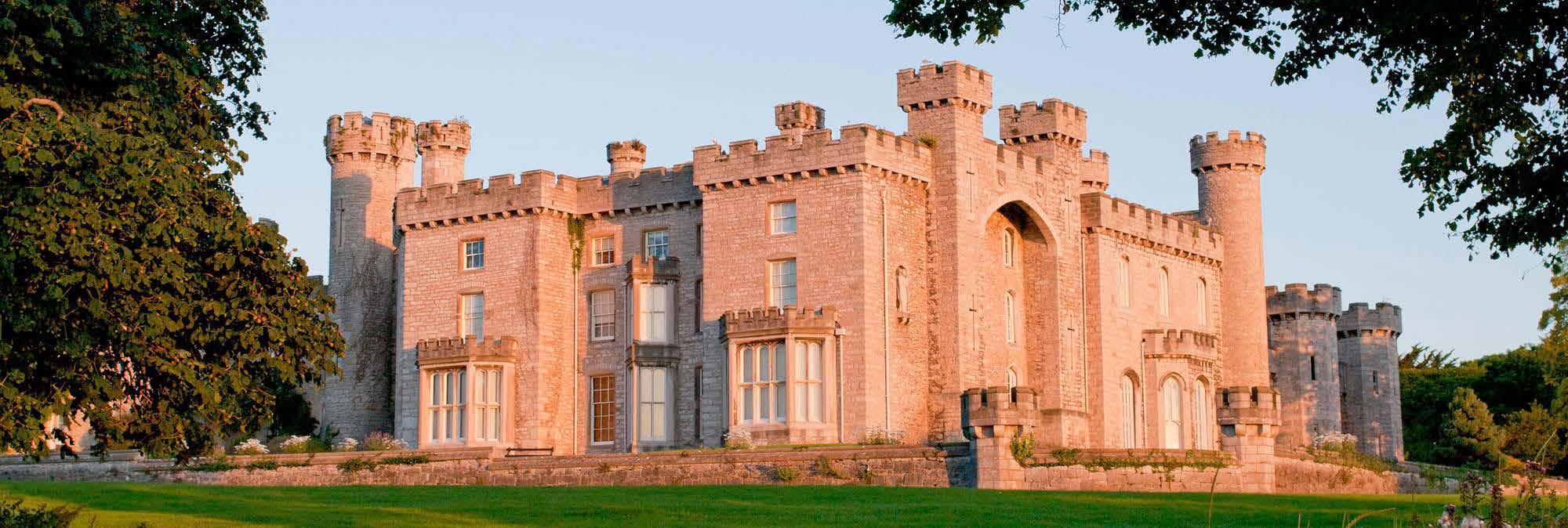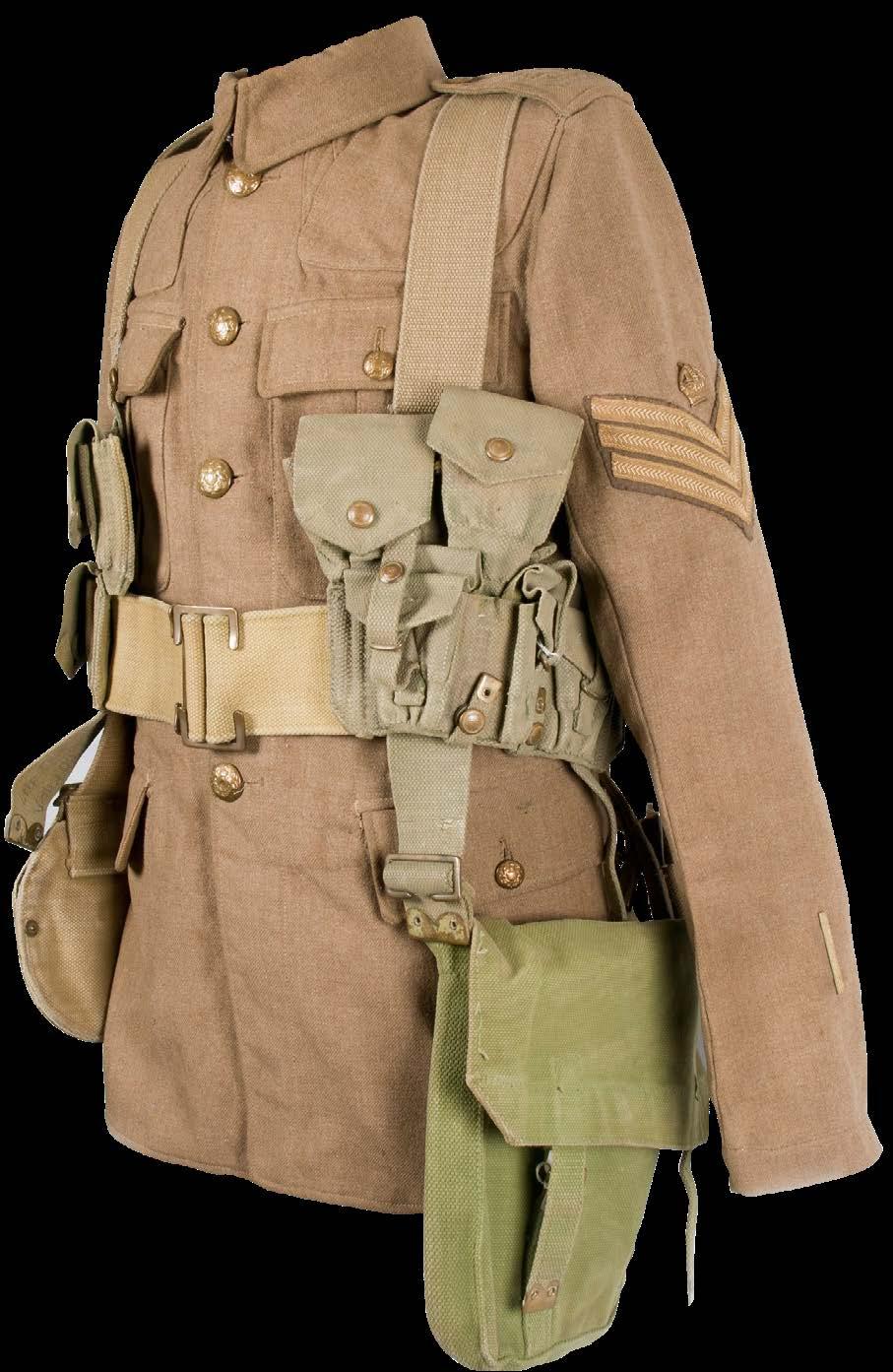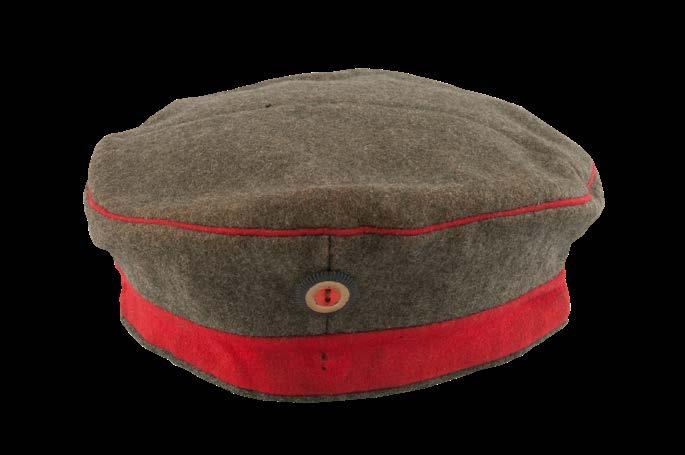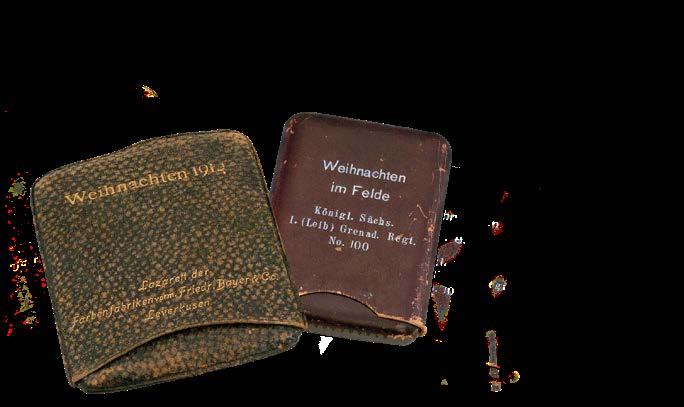
3 minute read
The 1914 Christmas Truce: An exhibition at Bodelwyddan Castle
Perhaps one of the most poignant episodes of the First World War was the Christmas Truce in 1914.
On Christmas Day the 2nd Silesian Jaeger Battalion and A Company of the 2nd Battalion the Royal Welch Fusiliers faced each other on the front at the village of Frelinghien on the French / Belgian border. During the morning, German soldiers began to appear, unarmed, in no man’s land and soon the soldiers of both sides were exchanging rations, cigars and cap-badges. The Germans, who controlled the village’s small brewery, even sent over a cask of beer. Elsewhere there were football matches, bonfires in no man’s land and exchanges of food and other items. The truce lasted until midnight on Boxing Day. Accounts of the truce began to appear in national and international newspapers a week later, much to the fury of those in high command on both sides. The event was recorded in the personal journal of Captain Clifton Stockwell, a company commander in the Welsh battalion; other witnesses such as Frank Richards on the British side and Johannes Neumann on the German side also recorded what they saw. These letters and diaries provide a fascinating insight into this encounter and prompted the idea of a collaborative travelling exhibition to mark the 100th anniversary of this event. The result was an international Christmas Truce Exhibition. Key organisations were The Royal Welch Fusiliers Museum (RWF) in Caernarfon and the Arbeitskreis Sächsische Militärgeschichte e.V. (Saxon Military History Group) in Dresden. Development of the exhibition was supported financially by the Welsh Government and the Dulverton Trust which enabled the inclusion of historical objects from the RWF Museum collection and the Saxon Arbeitskreis together with additional material from other venues.
Above: Bodelwyddan Castle, Denbighshire – the first Welsh venue for the Christmas Truce exhibition © Kevin Mason
The exhibition opened in the Militärhistorisches Museum Wolkenstein in Saxony on 2 August 2014 and toured in venues in Belgium and France before reaching Bodelwyddan Castle, Denbighshire, north Wales and where it was hosted from January – April 2015. The exhibition aimed to promote a sympathetic understanding of the experiences of those involved in the event. Exhibits told the human story and included mementoes such as the Princess Mary Christmas gift boxes sent to all members of the armed forces as a ‘little token of love and sympathy on Christmas morning’. Also incorporated were the equivalent Liebesgaben (gifts of love) sent to German troops by women’s associations, schools and the Red Cross. Exhibits that had survived the events of Christmas 1914 were a German field cap (Krätzchen) exchanged during the Truce and the German commander’s Reichsrevolver. Pride of place was given to Stockwell’s journal which was included courtesy of his grandson, Miles Stockwell. The Bodelwyddan exhibition featured a reproduction trench which provided a fitting backdrop for school visits and activities. Schools and colleges were offered the opportunity to work with subject specialists to explore themes of peace and reconciliation inspired by the events of the 1914 Christmas Truce, and were able to apply for financial help towards transport costs to visit the exhibition to ensure as many as possible could take part. The collaborative exhibition was a fitting tribute to the soldiers who came together across frontier lines to share a moment of peace together. Lieutenant-General Jonathon Riley Dr Kevin Mason



Left above: Krätzchen: German field cap exchanged during the 1914 Christmas Truce (RWF Museum Collection) © Kevin Mason Left below: Liebesgaben: Examples of ‘Gifts of Love’ delivered to German troops at Christmas 1914. © Kevin Mason Right: RWF NCO tunic from 1914 with standard webbing belts – RWF Museum Collection © Kevin Mason










